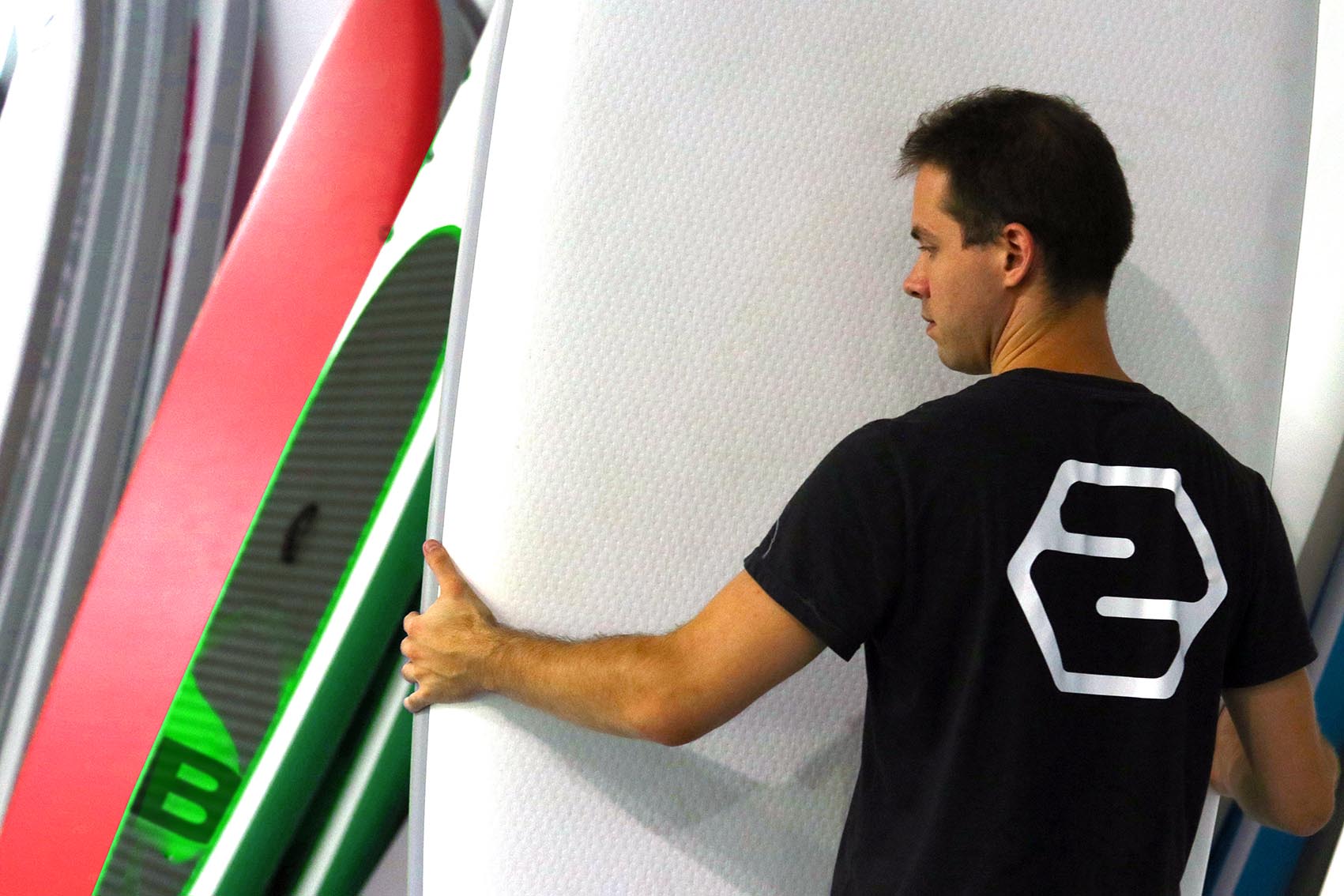
2HEX Stand Up Paddle Board Manufacturer – Introduction
2HEX Stand Up Paddle Board Factory Introduction
2HEX stand up paddle board factory’s product range includes all stand up paddle board quality levels, from stand-up paddle boards used in competitions for the world’s leading SUP brands, to large retail chains ordering price point stand up paddle boards. 2HEX runs one of the biggest stand-up paddle board manufacturing networks globally, with over 1500 production workers and a production of 60.000 SUP boards annually.
supProduction.p2
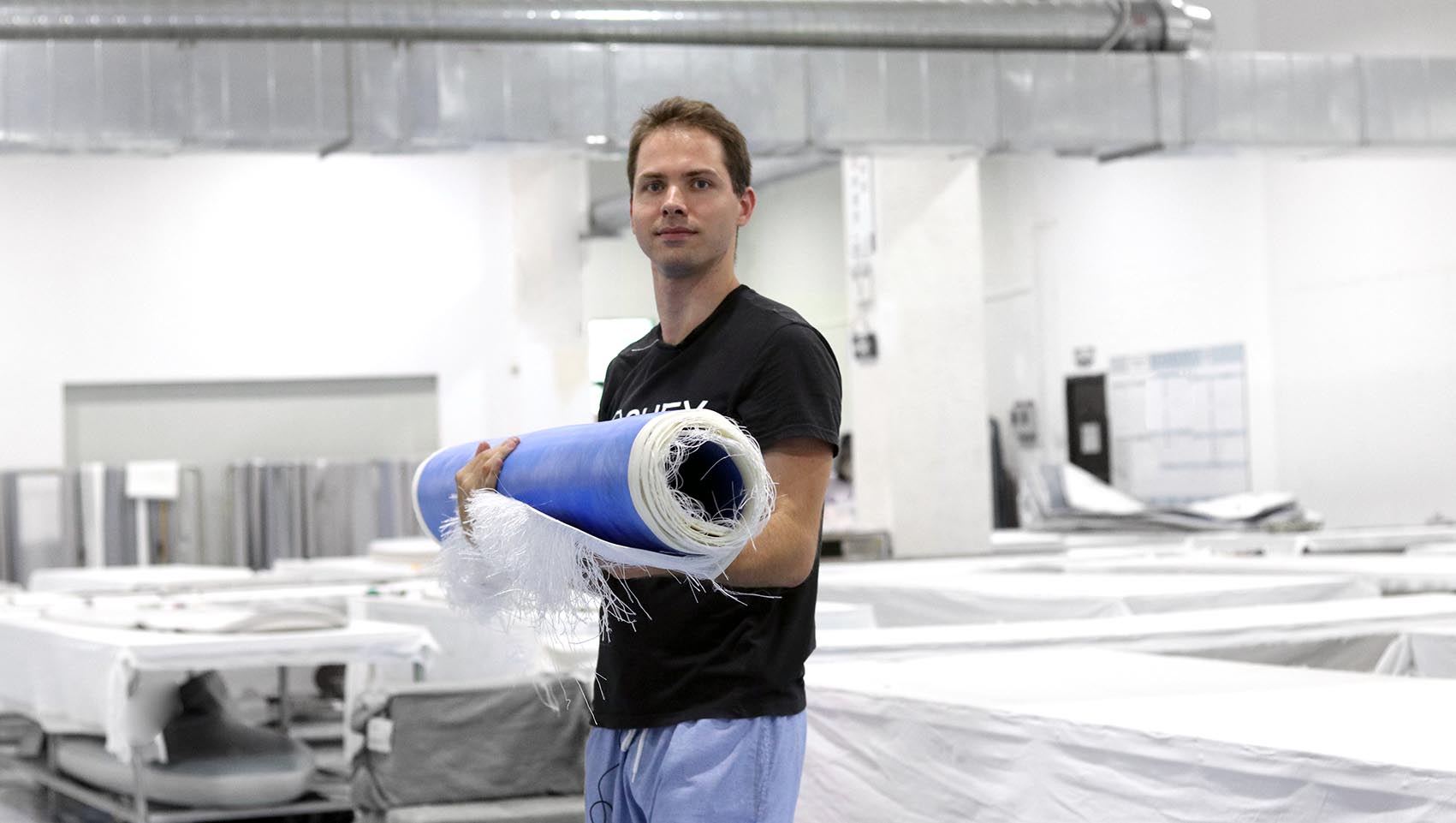
2HEX Stand Up Paddle Board Factory’s Production Process
1. The stand-up paddle board’s raw materials arrive:
- The double layer PVC sheets arrive in big rolls at the 2HEX stand-up paddle board factory. These PVC sheets will form the SUP’s main body.
- The upper and lower PVC sheets of the SUP-board are connected by thousands of little strings which have the length of the SUP board’s final thickness.
- The SUP PVC stringers and seams arrive.
- Glue (German Glue Loctite 233 by Henkel)
And the following SUP board accessories are prepared:
- SUP EVA traction pad
- SUP Leash
- SUP Paddle
- SUP Handles
- SUP Bags
- Cartons
- SUP Inflating nozzle
- SUP Fins and fin boxes (2HEX is also a manufacturer of SUP fins, fin boxes, paddles and EVA traction pads)
2. The first SUP Factory Quality Control Desk is located directly at the entrance of the SUP warehouse. All incoming SUP production components are checked before being forwarded to the SUP board production line.
3. The SUP board manufacturer CNC machine draws the SUP board outline on the double layer PVC sheet, or directly laser cuts the SUP board outline.
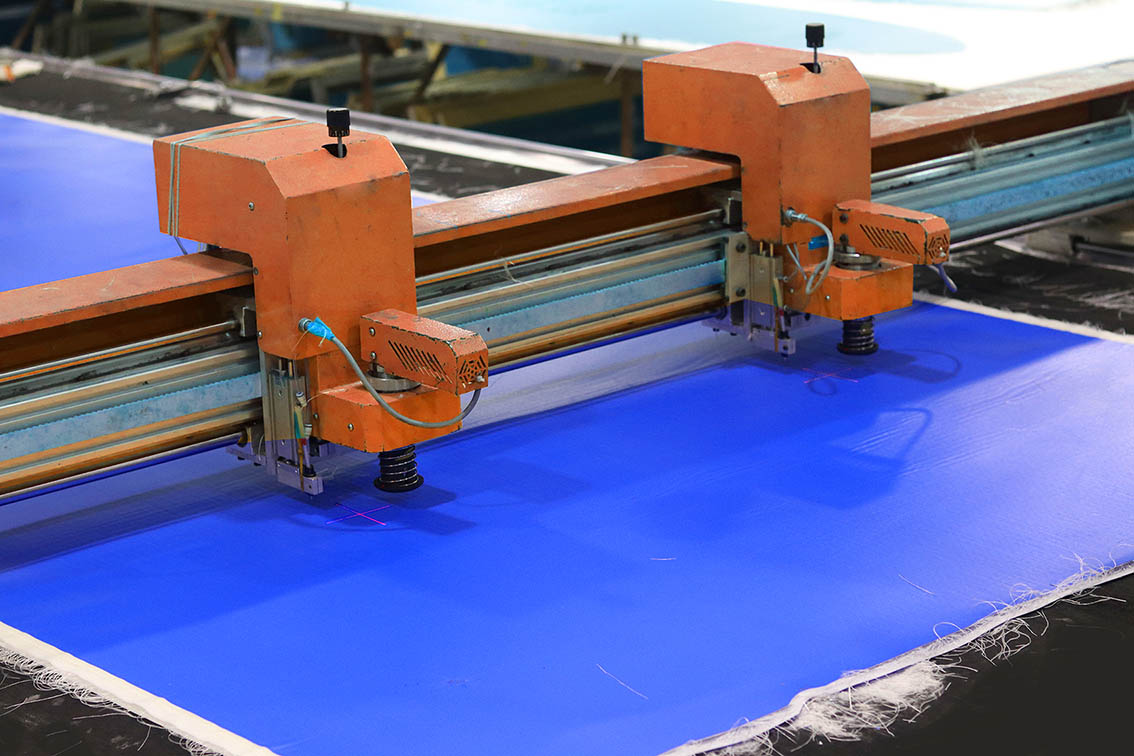
4. A QR code is placed on the PVC layer. Every board has its custom QR code, which will later be scanned by every worker during the complete production process. This allows the digital process manager to track back the time and production worker of every production step.
5. The PVC layer, which will later make the main body of the SUP board is placed under a digital SUP board printer, to receive a CMYK full print. Some other SUP board customers opt for silk screen printing. Both are printing techniques regularly used by your 2HEX SUP board manufacturer.
6. Next, the inner PVC seam-tape is hand-glued along the inner edge of the SUP board’s main body, to connect the top and bottom layers. To ensure the highest durability, we use the German glue Loctite 233 by Henkel.
7. Once the SUP board is given its top, bottom and sides, it is being inflated to check if air leaks. A layer of water is sprayed on the board to check for bubbles. If a leakage is found, the spot is being marked and returned to the gluing step of the SUP board production.
8. After ensuring that no SUP board leaks air, the straightness of each board is tested.
9. If the SUP board is straight and does not leak air, one or two stringers can be added to increase the stiffness, creating a higher quality board. A stringer is a PVC seam which is glued on the top of the SUP board. Adding two stringers can make a SUP board 85% as strong and stiff as an epoxy board. This is a process only used by leading SUP board manufacturers.
A popular SUP board design when working with stringers is to place a thin black stringer on a white stringer and both under a much wider slightly transparent stringer. This creates a similar look to the stringer of a surfboard. If a stringer is used during the SUP board production, then this is usually the only area that receives a custom print.
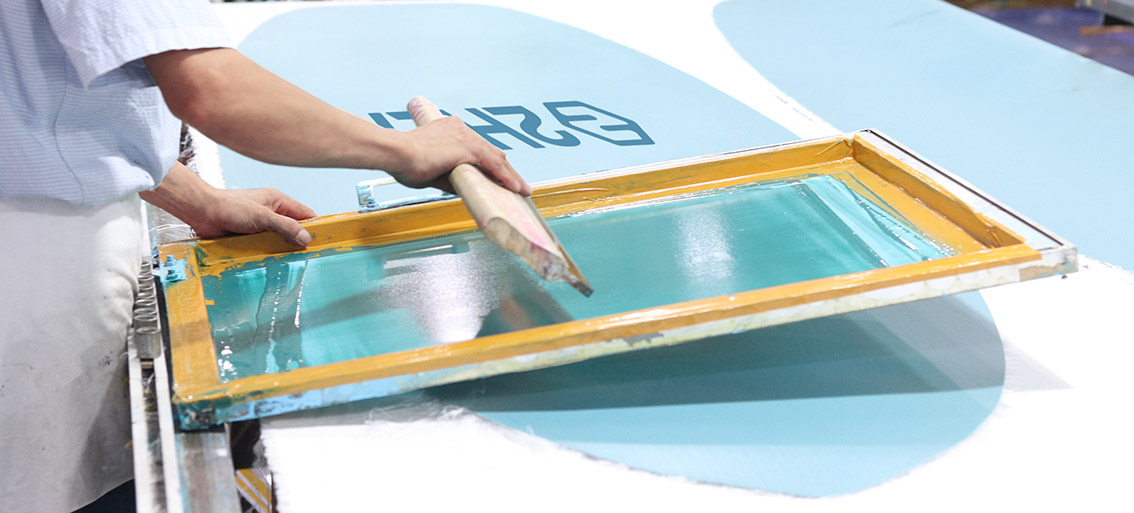
10. During the next step of the SUP board production, a second seam is taped around the outer edge of the SUP board. The outer seam is placed between the upper and lower PVC layer and on top of the inner seam.
11. After gluing on the outer seam, the main SUP board is finished and is being forwarded to 2HEX’ SUP board factory’s assembly room. In the assembly room the SUP board will be assembled with the SUP inflating-nozzle, the SUP EVA track pad, the SUP handles, and the SUP fin box.
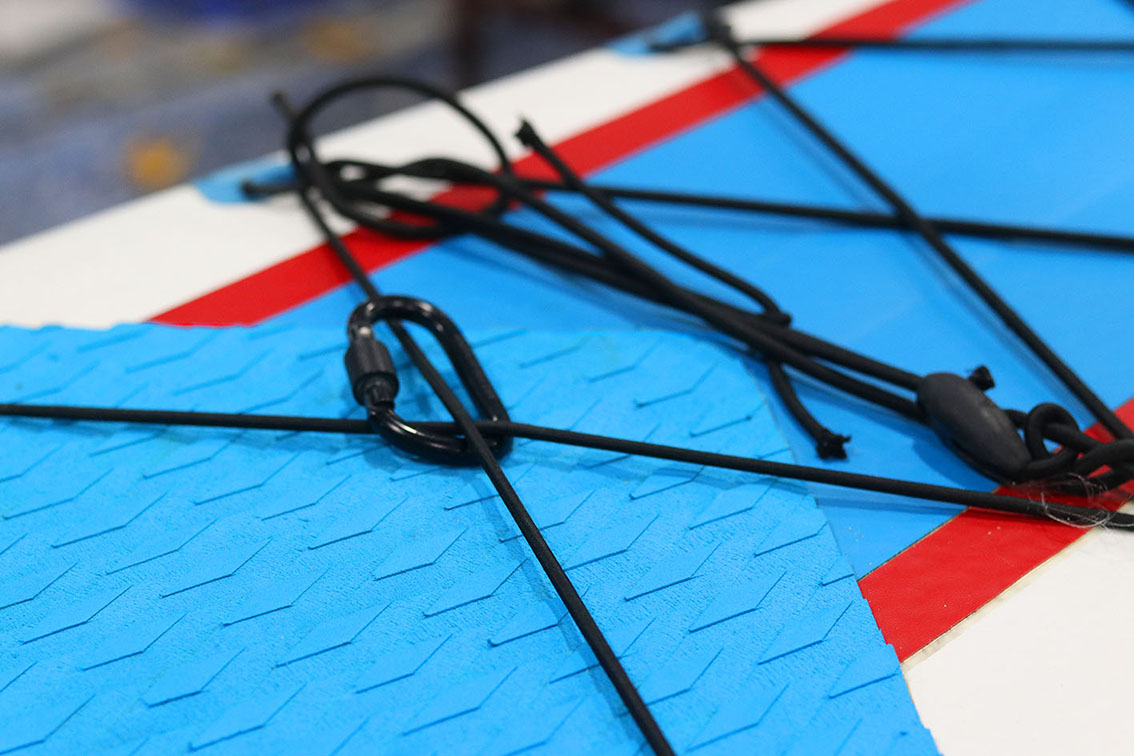
12. The listed components are glued on the main body of the SUP board, before the inflated SUP board goes under a warm roller, that presses and dries all components.
13. The finished SUP board is inflated once more up to 15 PSI and observed for 24 hours. This is the final quality control test in the SUP board production.
14. Once the SUP board has passed the final quality-control, it is deflated, rolled up and packed in a bag together with its fins, fin protectors, paddle and leash before it is ready to be shipped out from 2HEX SUP Board Factory.
